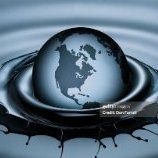China Denies Lowered Mekong River Level Caused By Its Dams
-
Recently Browsing 0 members
- No registered users viewing this page.
-
Topics
-
Popular Contributors
-
Latest posts...
-
3
Nong Khai visa run
Thanks for the report. Questions re border crossings come up often. We recently had a scary one where chap was made to stay 2 nights and in fact told to fly Vientiane to Bangkok. Tod Daniels post above sums up current situation and his comment pasted here is best advice. "IF all you're wanting to do is bounce out/back to milk a new 60 day free stamp (visa exempt) entry, my advice to you is FIND A SERVICE that bounces people to the border and back from your area." Back when the "2 per calendar year" was scrapped and the word Unlimited was tossed about in many threads....the comedy series "curb your enthusiasm" comes to mind. -
139
Zelensky - what possessed you?
He was whingeing about the previous admin ie Democrats. -
139
Zelensky - what possessed you?
Zelensky is a fool. Nothing to do with being jewish. You are a race baiter like most leftists. -
139
Zelensky - what possessed you?
The expensive-to-extract minerals are almost exclusively in areas now under Russian control. So the embarrassment and clown who sits in the Oval Office is going to browbeat Putin, too, and tell him he can call off his invasion, withdraw from areas where 500,000 babushkas have lost their sons, just so the US can go in and take rare earths and other minerals? A guy claiming an "online" IQ of 127-143 ought to know that's a non-starter, especially since Putin owns the US President. Remember 45's face after walking out of the Helsinki meeting? White as a ghost. And Putin wore a Cheshire Cat grin. He had reminded 45 why Putin owns him. -
12
90 Day Report.
I've been doing online reporting, 15 times, since the end of January 2022. Roughly 50% have been rejected for no apparent reason. Even though I never vary in the way I fill out the application. Before they accept my reporting its checked and and any application with any errors are rejected before submission. So why are some accepted without errors only to be rejected a week after submission? It's really infuriating knowing that I'm 100% sure my application is correctly filled out only to be rejected. My application form should be rejected, if it's wrong, before I'm allowed to submit it? I have in the past asked an IO officer about this problem but he just shrugged his shoulders. -
-
-
Popular in The Pub
-
.png.3b3332cc2256ad0edbc2fe9404feeef0.png.8488ab72b8bb2e508209bfe3211b6e08.png)




.thumb.jpeg.d2d19a66404642fd9ff62d6262fd153e.jpeg)







Recommended Posts
Create an account or sign in to comment
You need to be a member in order to leave a comment
Create an account
Sign up for a new account in our community. It's easy!
Register a new accountSign in
Already have an account? Sign in here.
Sign In Now